Indy Motor Speedway Completes World's Largest Sports Solar Farm
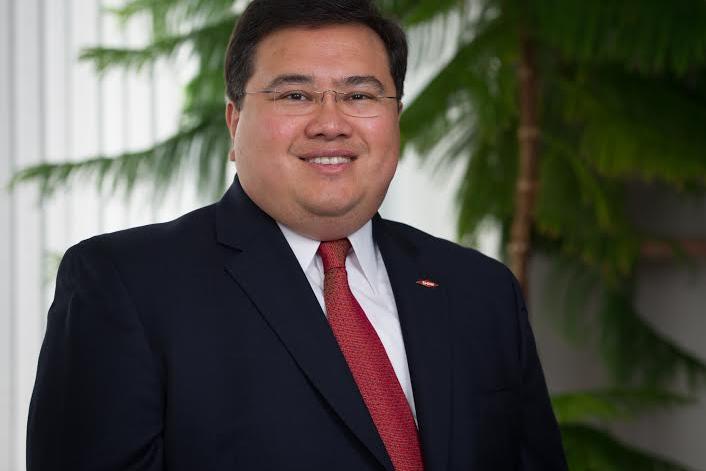

Racing is a longstanding and hugely popular spring and summer tradition in the U.S. And when it comes to car racing events, they don't get any bigger than the Indianapolis 500. The world's largest single-day spectator sporting event, the Indy 500 covers 500 miles – 200 laps on the world famous Indianapolis Motor Speedway's 2.5-mile oval.
Built for speed and getting a whopping 3 miles per gallon, Indy racing cars conjure up what the American Chemical Society referred to as “images of gas-guzzling, pollution-belching environmental menaces” – not exactly “in tune” with a nationwide clean energy and energy efficiency drive.
As it turns out, the ethanol blends now being used in Indy race cars actually make their emissions cleaner than those of the cars Americans drive every day, however. That's not all the organizers of the Indy 500 are doing to clean up their energy act.
A ribbon-cutting ceremony on July 1 marked the opening of the Indianapolis Motor Speedway (IMS) Solar Farm. Consisting of 39,312 solar photovoltaic (PV) panels ground-mounted along an under-utilized portion of the 1,000-acre campus, the 9-megawatt (MW) PV installation is the largest solar farm at any sporting facility in the world, according to an IMS press release.
The 9-MW Indianapolis Motor Speedway Solar Farm
Co-developed by San Jose, California's SunWize Technologies and Phoenix-based Blue Renewable Energy, the IMS Solar Farm will offset the equivalent of 10,288 tons of carbon per year.
Blue Renewable Energy entered into a land-lease agreement with IMS to build the PV system on the property. SunWize was responsible for its design, engineering and installation, while Clenera and Swinerton Builders completed the engineering and construction for Centaurus Renewable Energy.
The electricity produced by the solar farm is to be purchased by Indianapolis Power & Light (IP&L) through a power purchase agreement (PPA), terms of which were not disclosed. IP&L will own the solar renewable energy credits (SRECs) the system earns.
Commenting on the commissioning of the 9-MW solar farm, IMS President J. Douglas Boles said:
“In 1909, the Indianapolis Motor Speedway was constructed in part to help advance the automotive industry, which at that time was the new technology of the day. Today, IMS is honored to be part of a partnership with IPL, SunWize and Blue Renewable Energy where innovation and technology are coming together to bring diversification of generation resources to this community.
"The unused land at the IMS property just east of the race track has been transformed into a solar energy production facility that will provide an alternative source of energy to IPL customers.”
The president of AES' U.S. Strategic Business Unit, which owns IP&L, added:
“Solar generation is an important component of IPL’s commitment to developing renewable generation resources. The new IMS solar farm will be a constant reminder to those who visit the largest spectator sporting facility in the world of the creative solutions taking place here in Indianapolis to increase sustainability.”
IMS provided the following infographic, which lists facts and figures related to the new solar farm:
Image credits: Indianapolis Motor Speedway
Airline Industry Shaves Weight to Save Money
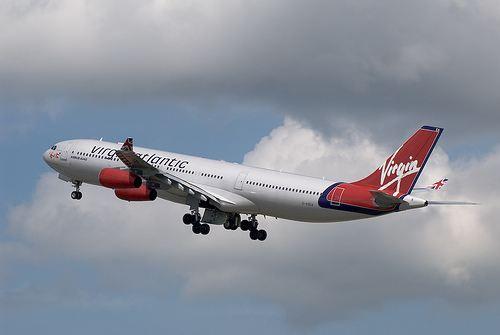

We don't often associate airplanes with low-hanging fruit. I mean, it might just be the worst metaphor one could imagine. After all, planes spend a lot of time entirely out of reach. But when it comes to finding ways to save fuel and reduce carbon emissions, there's lots of low hanging fruit.
The automobile industry has invested billions reducing the weight of their cars to reduce fuel consumption and they don't even have to lift them off the ground. So it's no surprise to hear that airlines are saving millions by reducing weight. What's surprising is that they haven't done more of that sooner.
The opportunity is enormous. Researchers at MIT estimate that that cost of each passenger carrying a cellphone costs Southwest Airlines $1.2 million annually in weight-related fuel expenses. That number jumps to $21.6 million if the cellphone is replaced by a laptop. Other pundits have pointed out that if every passenger used the bathroom before boarding the plane, it could save the airline millions. This caused budget airline Ryanair to consider charging passengers to use the bathrooms in flight (to encourage them to plan ahead).
Virgin Atlantic estimates that shaving even a single pound off all the planes in their fleet would save them 14,000 gallons of fuel per year. The airline has redesigned its meal trays, an exercise that was originally intended to improve the customer dining experience. Turns out they could fit more of the smaller, lighter trays on each meal cart, which means fewer meal carts per plane. The net result is close to a 300-pound weight loss. It's a great example of the kind of rewards that creative thinking, and a willingness to think outside the box, can bring. American Airlines launched their FuelSmart program in 2005, which has utilized a number of employee suggestions on ways to save fuel. Since its inception the program has saved a billion gallons or more. Some suggestions include cutting back on usage of auxiliary power, when on the ground, single engine taxiing, engine cleaning, high speed towing and adding winglets.
Specific weight-reduction measures include:
- Removing unnecessary cabin equipment.
- Replacing cargo liners and containers with lighter-weight materials
- Replacing American's catering carts with newer models made with lighter materials
- Reducing potable water amounts, replacing flight bag documentation with iPads.
All told these improvements save a combined 10 million gallons of fuel per year.
Longer term, there are, of course, entirely new designs utilizing materials like the carbon fiber substitutions in the Boeing 787 Dreamliner. Boeing estimates weight savings of 20 percent compared to aluminum, which is represents tremendous savings over the life of an airplane.
Image credit: happyrelm: Flickr Creative Commons
RP Siegel, PE, is an author, inventor and consultant. He has written for numerous publications ranging from Huffington Post to Mechanical Engineering. He and Roger Saillant co-wrote the eco-thriller Vapor Trails. RP sees it as his mission to help articulate and clarify the problems and challenges confronting our planet at this time, as well as the steadily emerging list of proposed solutions. His uniquely combined engineering and humanities background help to bring both global perspective and analytical detail to bear on the questions at hand.
Follow RP Siegel on Twitter.
Plastics Scorecard heralds new era of safer plastics use


By switching the plastic used in its IV bags, Dignity Health care system kept 700,000 pounds of high-concern chemicals - the equivalent in weight of a Boeing 747 airplane -- out of the environment, according to a new analysis that measures the "chemical footprint" of plastics.
The Plastics Scorecard v.1.0 offers the first comprehensive method for assessing and reducing chemicals of high concern in plastics and was designed to help companies choose safter plastics.
"From baby bottles made with BPA to medical devices made with phthalates, plastics are a surprising source of exposure to chemicals of high concern for our health and the environment," said Ann Blake, PhD, co-author of the report and Principal at Environmental & Public Health Consulting. "Forward looking businesses are looking closely at plastics for chemicals that may be subject to future regulations or consumer scrutiny."
"Plastics are possibly the largest contributor of any material to the toxic chemical economy. For example, plastics consume 96% of global Bisphenol A (BPA) production," added Mark Rossi, PhD, co-director of Clean Production Action and co-author of the report. "If we are ever to attain a green chemistry economy, we need to shift plastics manufacturing to chemicals of low concern to human health and the environment."
Check out the Plastics Scorecard here.
Picture credit: © Jason Smith | Dreamstime Stock Photos
Co-operative Energy powers up community energy campaign


Co-operative Energy is this year’s lead sponsor of Community Energy Fortnight, the world’s biggest community energy campaign.
Organised by the Community Energy Coalition (CEC) - a group of 36 civil society organisations led by sustainability non-profit Forum for the Future, the Community Energy Fortnight runs from 13-28 September 2014.
The Fortnight gives the British public the chance to visit established community projects in their local area, all of which are actively engaged in generating and/or saving energy for the benefit of local people. From visits to wind farms and solar parks to energy efficiency workshops, the events are designed to bring community energy to life and cultivate consumer engagement.
Ramsay Dunning, group general manager, Co-operative Energy said: “We are at the forefront of sourcing our power from community energy providers. We believe that the community ownership of clean energy projects empowers them to decide upon and manage their initiatives in locally appropriate ways and keeps the profits generated within the community.
“We’ll be encouraging our hundreds of thousands of customers and members to get involved as well. We know they are strong supporters of Co-operative Energy’s low carbon sourcing policies, and would like to see a more vibrant co-operative and social economy in the UK.”
Giles Bristow, director of programmes, Forum for the Future, commented: “The Fortnight is inspiring people across the UK to do something really positive to build a more sustainable energy system from the grassroots up, and the CEC is working hard to create the right conditions for it to flourish so we can help bring our members’ vision of more resilient communities to life.”
Picture credit: Andy Cantlon
Heartbleed Continues to Threaten Internet Security and Consumer Trust


When news of the OpenSSL Heartbleed vulnerability was announced to the public, its risk dominated the press. This infamous security vulnerability allows hackers to intercept communications and obtain information from vulnerable servers. OpenSSL is used for countless services, including Web servers, mobile applications, operating systems, routers and email clients. Articles quickly spread across the Internet with recommendations -- some of which were counterproductive -- yet many users took no action at all to protect sensitive information.
"This is a serious vulnerability," wrote Forbes cybersecurity columnist Joseph Steinberg about Heartbleed. "Some might argue that it is the worst vulnerability found (at least in terms of its potential impact) since commercial traffic began to flow on the Internet."
Consumers trust banks, retail stores and communications companies with personal information, including phone, credit card and social security numbers. Despite a couple of months passing since Heartbleed was announced, the bug continues to haunt consumer, technology firms and corporations alike. Consumer trust was severely violated during this security debacle, as judged by the overwhelmingly negative sentiment shared online Heartbleed immediately after the breech was announced. Companies need to rebuild trust and educate consumers to protect their data -- but some are responding with ambivalence and inaction, the opposite of what is needed.
A study by Errata Security found 309,197 servers were still vulnerable (down from 600,000 in April), some of them critical. "This indicates people have stopped even trying to patch," says Robert Graham, Errata's owner. "We should see a slow decrease over the next decade as older systems are slowly replaced. Even a decade from now, though, I still expect to find thousands of systems, including critical ones, still vulnerable."
According to analysis by Venafi Labs, some industries have been faster than others to respond to the Heartbleed vulnerability. The top 10 list of remediated sites in the sample set includes discount stores, semiconductors and major banks. Leading the pack on the top 10 most vulnerable from the sample set: telecommunication services, electronics and railroads.
The companies with vulnerable servers are likely to be targeted by hackers, enabling Heartbleed problems to continue nearly three months after the vulnerability was announced. "Hackers are looking for those who haven't yet changed their passwords and for services who did not install a patch quick enough," said Christopher Hadnagy, chief human hacker at the security consulting company Social Engineer.
In the digital age, companies that don't prioritize data security are more susceptible to publicity nightmares that encourage users to close accounts and go elsewhere. Companies must act proactively to earn and maintain credibility and a strong brand.
Sheila Jordan, chief information officer for Symantec, recommends businesses determine which information is really sensitive and which isn't. They can then segment data security strategies and prioritize the highly sensitive data.
"It is really important that businesses understand their data," says Jordan in an interview with Triple Pundit. "It really is all about the data and how it is now flowing between mobile devices, cloud, and structured and unstructured data coming in."
Jordan urges widespread employee engagement for data security. "In reality, it is the job of the CIO and CSO to educate the employees on policy, process, and how to secure our devices. I think everyone within the organization has to take a role in really securing that information."
Unfortunately, a study by Software Advice, an online evaluation firm for IT security software, found that more than 75 percent of respondents say they've received no advice about Heartbleed in the workplace, and two-thirds of respondents haven't changed any passwords to protect their accounts. Despite Google and Yahoo being affected, only 19 percent of all respondents changed email passwords. Many Internet users still perceive the Internet as safe, but future privacy debacles will reduce confidence.
Consumers also need to take responsibility for protecting themselves. There are plenty of users out there that haven't taken action to protect their personal information in response to Heartbleed. According to a Pew study from late April, a mere 39 percent of Internet users have changed passwords or closed accounts. This number was greater in households with higher incomes and levels of education.
"As consumers, we've done such a great job of securing our homes and buying insurance policies," says Jordan. "We need to heighten our awareness of securing our data and our identities. As consumers, it’s our responsibility when we’re interacting with companies to check out their security policies and procedures."
One unlikely outcome of the OpenSSL Heartbleed security disaster is the creation of the Core Infrastructure Initiative (CCI) through a collaboration between the Linux Foundation and early contributors: Adobe, Amazon Web Services, Bloomberg, Cisco, Dell, Facebook, Fujitsu, Google, IBM, Intel, Microsoft, NetApp, RackSpace and VMware, which aims to fund critical elements of global technology. This initiative is spurred by the fact that OpenSSL, vital to Internet security, ran on a donated operating budget of $9,000 in 2013. In addition to preventing similar vulnerabilities and security breaches, supporting organizations may gain credibility in the eyes of consumers, seeing them as part of the solutions.
To boost trust and protect privacy, companies need to secure data, but they also must educate both users and employees on safe Internet practices. Workplace policies and educational programs are important and vital to responding to the changes in the business environment brought on by internet security threats. Companies that lead the way with transparency and proactive initiatives will thrive in the digital age.
Image Credit: Mashable Composite, iSock, Saul Herrera
Sarah Lozanova is a regular contributor to environmental and energy publications and websites, including Mother Earth Living, Green Building & Design, Triple Pundit, Urban Farm, and Solar Today. Her experience includes work with small-scale solar energy installations and utility-scale wind farms. She earned an MBA in sustainable management from the Presidio Graduate School and she resides in Belfast Cohousing & Ecovillage in Midcoast Maine with her husband and two children.
From Coffee and Tea to Fish in the Sea: A New Frontier of Fair Trade


By Maya Spaull
All too often the news reports about marine species are grim: We read about declining fish stocks, illegal and unregulated fishing and the increasing degradation of coral reefs. Why is this happening? What factors motivate fishing practices that create such harmful outcomes to our precious marine resources?
Fishermen are often on the losing end of global trade, facing low market prices and lack of tools to improve resource management. Fair Trade USA believes there is a missing piece to this complex, yet critically important and ever-evolving puzzle – that we cannot have truly sustainable seafood unless we make sustainable livelihoods for fishing communities a top priority. We believe that Fair Trade can be part of a larger effort to make wild-caught seafood better for people and planet.
The challenge
In 2011, global exports of wild capture fish from developing countries reached USD $34.5 billion. An estimated 120 million people are working in primary and secondary fish livelihoods, and more than 90 percent of the world’s capture fishermen are employed in small-scale fisheries. Like their developing country counterparts in agriculture, many fishing communities struggle against fluctuating market prices, limited direct market access and unregulated working conditions. Furthermore, with many fisheries under inefficient or limited management, fish stocks and marine species are dwindling at an ever-increasing rate. Fishermen are, quite simply, struggling to make ends meet, and they rarely have enough resources and incentives to engage in sustainable fishing practices.
How can Fair Trade help?
The pioneering work of groups such as the Marine Stewardship Council (MSC), Monterey Bay Aquarium’s Seafood Watch program and Fishery Improvement Project providers has been instrumental in building the sustainable seafood movement and raising consumer demand for responsibly-harvested seafood. Fair Trade USA is excited to offer a complimentary approach to the current sustainable seafood programs, with a focus on social and labor rights, working conditions and economic incentives that inspire better resource management over time.
Perhaps best known for certification in coffee, Fair Trade is a market-based approach to improving the lives of farmers and workers, protecting the environment, and delivering quality and safety. At its core, Fair Trade puts people at the center of sustainability. We believe the key to sustaining healthy communities and stewarding the globe’s fish species is to create tools and improved market access in partnership with hardworking fishers, seafood buyers and mindful consumers.
How will fishing communities benefit from Fair Trade?
Fair Trade certification will provide a framework for fishermen to organize into self-empowered associations, improve their business skills, access premium markets and steward their marine resources. In addition, fishermen will receive extra financial premiums to devote to community development projects in areas like education, healthcare and infrastructure. Since 1998, Fair Trade producers for products around the developing world have earned more than $153 million in community development premiums.
Ultimately, our vision is that Fair Trade’s contribution to sustainable marine fisheries will:
- Improve working and living conditions in fishing communities;
- Improve ecosystem resiliency by generating stepwise educational tools to activate progressive improvements in marine resource management; and
- Harness the purchasing power of consumers to increase financial returns for those employed in the fishing sector.
When will Fair Trade seafood be available?
Fair Trade USA has been working with fishing communities, marine conservation experts and market partners throughout the supply chain. The Fair Trade Fisheries Advisory Council has been elected to consult on conservation, economic and applied aspects of Fair Trade Fisheries program. Recent updates include:
- The world’s first Fair Trade Capture Fisheries Standard is nearing completion, having just finished a public consultation period.
- With our partner, Anova Food, LLC, we are field testing the program with a handline caught yellowfin tuna fishing community in Indonesia.
- We are working with retailers and consumers in North America to cultivate the market for Fair Trade Certified seafood.
It is our hope that the results of this work will benefit small-scale fishing communities and the natural environment upon which they depend. Fair Trade USA welcomes the input, participation and support of a variety of stakeholders in the marine sector. For more information on how you can get involved, please contact [email protected].
Image credit: Mega Caesaria/Unsplash
Maya Spaull is Director of New Category Innovation for Fair Trade USA.
Detroit Water and Sewage Department Issues Shut-Off Notices to 46,000


Is access to clean water a fundamental human right? According to the United Nations' Declaration of Human Rights, not exactly. But if you ask George McGraw, the founder and executive director of the DIGDEEP Right to Water Project, the answer is a resounding ‘yes.’
The goal of McGraw, who is also an international human rights lawyer, and DIGDEEP is not just to increase access to clean water or educate people about water issues, but also to fundamentally change the way we think about water -- starting at home.
“When it comes to water it is really easy to silo people into groups, to treat other people as beneficiaries and see ourselves as donors,” McGraw told Triple Pundit after speaking at the Ford Trends conference in Detroit last week. “As a human rights organization, we really try to break down those barriers and get people to think about these issues differently.”
Our conversation was especially timely -- as we talked next to an indoor fountain at a pricey hotel, thousands of homes in the city outside were without running water. Starting in March, the Detroit Water and Sewage Department (DWSD) sent out shut-off notices to 46,000 homes for overdue bills, arguing that people can afford to pay, but refuse.
At $75, the average monthly water bill in Detroit is close to double the national average.
To date DWSD says it has cancelled service for 4,500 accounts, but this number could rise. On June 24, the U.N. called Detroit’s cutoffs to people that cannot afford to pay "an affront to human rights." It also warned that over the next few months as may as 30,000 households could be disconnected from water services.
In 2010, the U.N. adopted a non-binding resolution to recognize access to clean water and sanitation as a basic human right. Citing concerns on the effect of the resolution on other U.N. efforts, as well as the legal implications of the resolution, the United States was one of 41 countries to abstain from voting on that resolution.
Detroit may be the first city in the U.S. to encounter mass shut-offs, but McGraw warns that this may not be such a rare scenario in the future. DIGDEEP, which has built water access projects in Africa and Asia, is refocusing its efforts on domestic issues, making it the only water rights NGO working on a national basis in America. It uses a two-pronged approach: building water infrastructure projects for Americans that lack access, and spreading water-rights and conservation awareness more broadly.
For their first well project stateside, DIGDEEP is focusing on the American Indian population, the group hardest hit by water poverty in the U.S., with a pilot project on the Navajo reservation in New Mexico. While only 0.6 percent of the general population in America lacks access to water and/or wastewater disposal, that rate rises to 13 percent among the American Indian population. The pilot, which includes a central well, a truck distribution system and in-home water storage, will reach about 250 homes to start.
Prior to the DIGDEEP project, community members collected water from snowfall in the winter and in the summer from contaminated windmills used to fill livestock troughs. Mining activities in the area have left behind uranium pollution as far as 2,000 feet underground. While boiling water will get rid of any bacteria, it makes uranium levels more concentrated. The pilot will cost about $500,000, almost half of which will go toward drilling a well deep enough to get past the uranium contamination.
Between the pollution, high altitude and a hesitance among the community to trust outsiders, McGraw says the New Mexico project is, in some ways, more difficult than the work they did in South Sudan or Cameroon.
“But it’s a lot more rewarding too,” he said. “In the end, we are Americans working for Americans.”
McGraw and his team are seeking to reach other Americans through their 4-Liter Challenge, an annual call for people to spend four days limiting their daily water use -- for everything from cleaning to drinking to cooking -- to just four liters, the same amount nearly 1 billion people around the world live on every day. Every October, DIGDEEP invites people to take the challenge, raise money and gain a little empathy for the water-poor.
This year, the organization will expand the challenge with a grade 6-12 school curriculum and a new Web tool. The introduction for the curriculum is written by the Catarina de Albuquerque, the U.N. special rapporteur on the human right to safe drinking water and sanitation.
Nationwide, domestic use makes up just 10 percent of overall water use. At 70 percent, agriculture is the biggest water hog, followed by industrial use at 20 percent.
But McGraw sees the home as the most powerful nexus for change.
“The people that run farms and the people that run factories are most affected at home. If we can get them to change the way they think about water in their homes, and change the way their consumers or their investors think about water, then it becomes a lot easier to change the behavior of agriculture and industry,” he said.
For thousands of Detroiters, water is certain to be a big topic at home throughout the summer.
“We need to learn the lesson that we didn't learn when we didn’t put water in the Declaration of Human Rights,” said McGraw. But its an issue that goes beyond international doctrines. What we need, he says, is “to establish a clear legal and ethical principle -- not just in our laws and in our countries, but in our minds and our attitudes.” Image credit: Flickr, Steve JohnsonFormer BP CEO Makes the Business Case for LGBT Equality
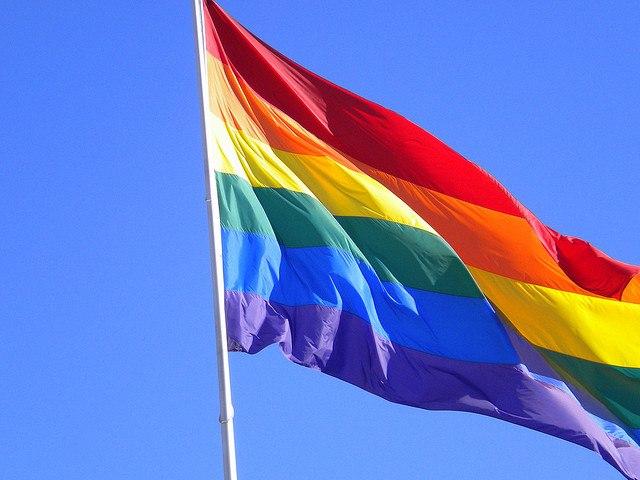

A few years before Tony Hayward resigned as head of BP after the Deepwater Horizon oil spill in the Gulf of Mexico, the previous BP CEO, John Browne, was forced to bow out from the company over a much different scandal: He was outed as gay by a British tabloid. Now the former executive has written a book about his experience, “The Glass Closet: Why Coming Out Is Good Business,” and is advocating for the rights of gays and lesbians in the workplace.
Released in May, “The Glass Closet” details Browne’s double life as a CEO and a closeted gay man and tells the stories of other gay and lesbian professionals coming out at work. The book concludes with an open letter to CEOs about why promoting an inclusive environment for LGBT employees isn’t solely a civil rights issue or moral imperative for companies – it’s a smart business decision.
“Inclusion creates a level playing field, which allows the best talent to rise to the top,” Browne writes, in a book excerpt published in Fast Company.
In order for employees to do great work, they can’t devote a quarter of their brain power to hiding their sexual orientation, Browne writes; employees perform best when they are applying their whole brain to their job. Browne points to studies that show an LGBT-friendly work environment can increase productivity up to 30 percent, in an interview with Bloomberg Businessweek.
LGBT inclusion cannot only help companies nurture and retain their top workers, but it can also assist them in recruiting talent. In one survey, around 80 percent of gay and lesbian Americans said that when they were applying for a job, it was “very important” or “fairly important” for the potential employer to have an LGBT equality and diversity policy in place, Browne writes. When the same survey was carried out in the United Kingdom, 72 percent of respondents agreed.
Wall Street has taken notice, Browne says: After Goldman Sachs CEO Lloyd Blankfein appeared in a Human Rights Campaign video supporting same-sex marriage in 2012, he admitted that his political stance caused his firm to lose at least one major client. But Blankfein defended his video appearance to the media, explaining that an accepting work environment attracts top-notch employees and implying that this recruitment strategy is more important than driving off a customer.
But can a pro-LGBT workplace result in higher profits? Starbucks announced its support for marriage equality in 2012, Browne writes, leading to a strong boycott and social media campaign from an anti-same-sex-marriage group. A year after the backlash, an angry shareholder addressed the company’s annual shareholder meeting, blaming the coffee giant’s political position for its less-than-stellar earnings in the quarter after the campaign. In response, Starbucks Chairman and Chief Executive Howard Schultz said that, “Not every decision is an economic decision …We employ over 200,000 people in this company, and we want to embrace diversity. Of all kinds.”
Browne is careful to differentiate between diversity and inclusion: “Having a certain number of employees from diverse backgrounds will do little to help a business unless those employees are made to feel welcome and valued,” he writes. Policies that formalize a company’s pro-LGBT stance are a good place to start, according to Browne: Guidelines can be tracked and measured against existing laws and other companies’ commitments to workplace inclusion.
The working world is changing, slowly becoming more welcoming to gay and lesbian individuals, Browne says. He notes that in 2002, 61 percent of Fortune 500 companies prohibited discrimination based on sexual orientation, and only 3 percent banned gender-identity discrimination. By 2014, these numbers jumped dramatically, with 91 percent of Fortune 500 companies including sexual orientation in their corporate anti-discrimination policies and 61 percent including gender identity.
But Browne says we still have a long way to go before the workplace is truly equal for LGBT workers. Many of the individuals he interviewed for his book wished to remain anonymous, he told Bloomberg Businessweek, and there are currently no publicly gay chief executives at any Fortune 500 company, the New York Times reported.
Browne hopes “The Glass Closet” will open up a discussion about LGBT inclusion in the workplace and has launched GlassCloset.org to continue the conversation, encouraging gay and lesbian professionals to submit their own personal stories about coming out at work.
“As an executive in business, I did not have an openly gay role model to whom I could aspire,” Browne writes on the website. “That is why I launched GlassCloset.org, as a place for people to share their stories and to become role models for those struggling with a hidden life.”
Browne has continued to achieve professional and personal success after his resignation from BP, according to the New York Times -- he is a partner at a private equity firm, serves as a member of the House of Lords and found love with a man who wrote him a letter after his resignation – but he wishes he hadn’t lived so much of his life in the closet.
“I wish I had been brave enough to come out earlier during my tenure as chief executive of BP,” he writes on GlassDoor.org. “I regret it to this day.”
Image credit: Flickr/Kevin Goebel
Passionate about both writing and sustainability, Alexis Petru is freelance journalist based in the San Francisco Bay Area whose work has appeared on Earth911, Huffington Post and Patch.com. Prior to working as a writer, she coordinated environmental programs for Bay Area cities and counties. Connect with Alexis on Twitter at @alexispetru
Ford and the Sustainability of the Family Legacy
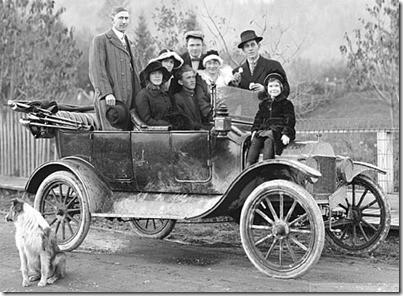

My grandfather worked as a plant manager at Ford Motor Co. for 34 years. When I ask him about his experience, he does not refer to Ford as a company, but as a family. Since his retirement, Ford has remained an important part of our own family. F-150s have served as the toolbox for our family farm for years. Ford minivans have transported us on exciting journeys to faraway destinations, albeit fraught with epic battles between siblings in the backseat. I learned how to drive behind the wheel of a Ford and emerged unharmed from a Ford following a nasty collision. My family has never purchased a vehicle that wasn’t a Ford. I would venture to say that Ford has left a far greater influence on the lives of my family and I than any large corporation in the world.
As I toured the factories in Dearborn, Michigan during last week’s annual Ford Trends Conference, I listened to today’s employees echo my grandfather’s talk of the Ford family. The same employees glowed with pride about the recent announcement of Ford’s No. 1 ranking on Interbrand and Deloitte’s Annual Best Global Green Brands list.
Throughout the conference, I couldn’t help but ponder the intersection of these two sentiments. What does family have to do with a company’s commitment to sustainability? The answers are probably most obvious in smaller, family-owned companies. However, I might argue that many of our most recognizable brands represent even more powerful testaments to sustainability of the family legacy through cultures that endure for generations despite the added pressures of public ownership and attention. Consider Forrest E. Mars Sr. who, in 1947, documented his commitment to building a business that creates a “mutuality of benefits” for all stakeholders -- a culture which lives on through Mars’ Principles in Action summary. Or the Waltons of Walmart, who’s longtime commitment to a sustainable supply chain inspired a sustainability index, which now evaluates suppliers in over 200 product categories.
Ask Ford Executive Chairman Bill Ford whether there’s a more intrinsic case for sustainable business than the family legacy: “What my great-grandfather established, especially his legacy of innovation, continues to inspire our commitment to a strong business, great products and a better world. We are putting unexpected levels of technology within reach of millions of people, accelerating the development of new products that customers want and value, and driving growth by creating jobs and bringing the freedom of mobility to the world.” Like the legacy of innovation forged by the iconic Henry Ford, family-affiliated companies find their identity in the ethos they leave to family generations that follow. If the future is a company’s priority, how can quick, short-term gains possibly take precedent over long-term viability?
This serves to explain how Ford has managed to set itself apart from competitors in recent years. The auto giant has taken its share of hits, no doubt. But after years of duking it out with both cross-town and cross-Pacific rivals, Ford has lived up to its reputation for toughness by adapting to change the game altogether. The automaker now offers seven electrified models, including six hybrids and the purely battery-fueled Focus Electric. And its signature F-150 pickup truck has set the bar among competitors with a full aluminum body that cuts 700 lbs from last year’s model without sacrificing size. From its industry leadership in developing renewable energy infrastructure, to achieving a 62 percent reduction in global water consumption since 2000, Ford continues to push the envelope with its legacy of innovation.
But, as I learned in Dearborn, the Ford family’s commitment to sustainability extends far beyond its own products or even the transportation industry. Todd Walton, Manager of Ford’s Environmental Quality Office, talked about how Ford’s water stewardship initiatives are addressing issues related to water access in communities around the world. In recent years, Ford has invested millions of dollars in wastewater treatment and rainwater harvesting and purification projects around assembly plants in water-scarce regions of India, South Africa and South China. “Ford has been growing in many areas of the world where water access and availability are a concern,” said Walton. “So we’ve been actively working there to help people get access to fresh drinking water. In India, we have launched projects to install water filters in government-run pre-school centers for children and primary schools near our plants. We also run campaigns to communicate the importance of clean drinking water for children.”
Ford's annual Trends Conference makes it clear that the company is looking at the world through the eyes of the next generation. Today’s Ford family is not inheriting the family business, they are borrowing it from their grandchildren.
Image credit: Sweet & Simplicity Blog
Global Ocean Commission Charts Course for High Seas Recovery
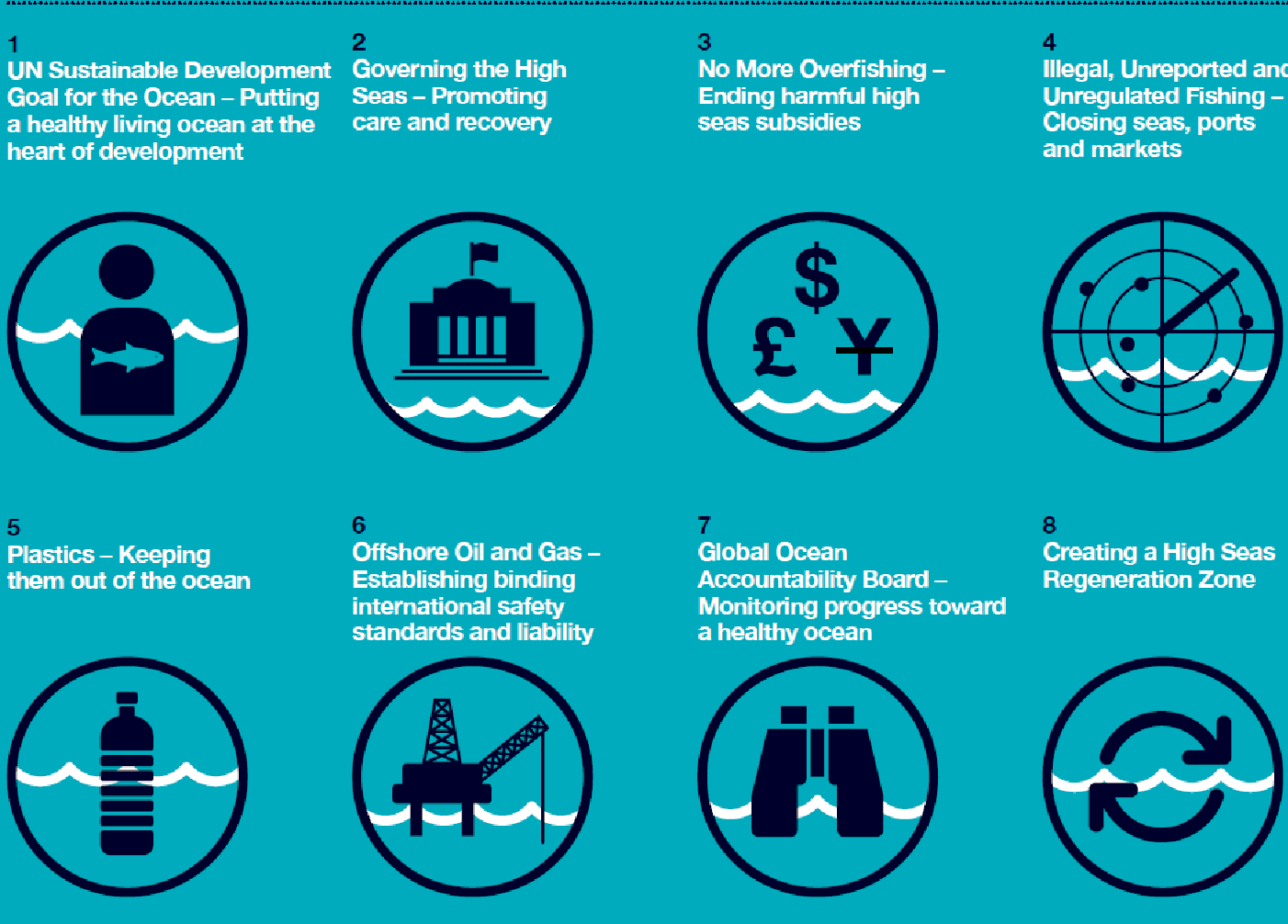

Covering nearly 75 percent of the Earth's surface, the ocean is the single largest ecosystem on the planet. From influencing weather patterns and climate trends and providing food, essential nutrition, livelihoods and recreation for billions to supplying the oxygen we breathe, it's difficult to overestimate the influence of the ocean on the development, evolution and maintenance of life and human civilization.
Unfortunately, the health of the global ocean is in decline. “Habitat destruction, biodiversity loss, overfishing, pollution, climate change and ocean acidification are pushing the ocean system to the point of collapse,” according to an introductory letter from the co-chairs of the Global Ocean Commission.
“Governance is woefully inadequate, and on the high seas, anarchy rules the waves. Technological advance, combined with a lack of regulation, is widening the gap between rich and poor as those countries that can, exploit dwindling resources while those that can’t experience the consequences of those actions. Regional stability, food security, climate resilience, and our children’s future are all under threat.”
In “From Decline to Recovery: A Rescue Package for the Global Ocean,” the Global Ocean Commission Report 2014 puts forth a package of eight proposals that it believes can turn the tide and reverse the degradation of the global ocean within the next decade. That's if the proposals are “expeditiously acted upon,” which is why the commission is also issuing “Mission Ocean,” a call to action for public and private sector leaders and concerned individuals the world over.
High seas in decline
The Global Ocean Commission doesn't pull any punches when describing the current state of the global ocean. As Commission co-chairs José Maria Figueres, Trevor Manuel and David Miliband state: “The ocean is under threat, and humanity’s approach to it is uncontrolled.
“Benign neglect by the majority, and active abuse by the minority, have fueled a cycle of decline. No single body shoulders responsibility for ocean health, and an absence of accountability is characterized by blind exploitation of resources and a willful lack of care. We call this the cycle of decline.”
The focal point of the 2014 Global Ocean Commission report is the high seas – the 64 percent of the global ocean that falls outside statutory 200-nautical mile national boundaries.
“Almost inconceivably large and remote,” the open ocean, the report authors highlight, “is the great physical and biological pump at the heart of the global atmospheric and thermal regulation and the driver of water and nutrient cycles” that support all life on earth.”
Putting an economic value on the high seas
Natural capital accounting is in its infancy, and we as a species still have much to learn about the world ocean and the wide range of ecosystem services it provides humankind. In seeking to come up with an estimate of the economic value of the high seas ecosystem, the report authors note that they are, if anything, undervalued.
Following is a list of the high seas ecosystems services identified in the report:
- Air purification;
- Waste treatment and life cycle maintenance;
- High seas carbon capture and storage;
- High seas provisioning of fish and other seafood;
- Genetic and ornamental resources;
- Tourism, leisure and recreation.
The economic value of high seas carbon storage and fisheries
Commission researchers have come up with estimates of the economic value of two key high seas ecosystem services: carbon storage and fisheries. Each, according to the report, generates tens of billions of dollars of value to societies every year.
The global ocean and highs seas provide human societies with a wide range of fundamental ecosystem services. That includes the central role it plays in determining weather patterns and climate. As the Global Ocean Commission report authors state:
“The global ocean produces almost half of all the oxygen we breathe and absorbs more than a quarter of the carbon dioxide we emit into the atmosphere. More than 90% of the heat trapped in the Earth system by greenhouse gas emissions is stored in the ocean, providing a buffer against the full impacts of climate change on land; however, this is having alarming consequences on ocean life and is perhaps the largest unseen environmental disaster of our time.”
Storing the equivalent of some 2 billion-plus metric tons of CO2 annually, commission researchers estimate the value of high seas carbon storage at $148 billion a year, ranging from $74 billion to $222 billion annually. “By comparison,” the report authors note, “the entire Official Development Aid outlay for 2013 was $134.8 billion.”
Turning to the economic value of high seas fisheries, commission researchers found that nearly 10 million metric tons of fish are caught annually on the high seas – just over 12 percent of the global annual marine fisheries catch, which stands at 80 million metric tons. The estimated landed value comes in at around $16 billion, about 15 percent of the total landed value of marine fisheries of around $109 billion.
3p has been doing some extensive, in-depth reporting on sustainable seafood. You can check it out here.
The need for international high seas governance
Its inaccessibility essentially left the high seas an international marine reserve – until about the middle of the 20th century, that is. Technological advances and the advent of factory fishing fleets have pushed high seas ecosystems into decline, while the rise of greenhouse gas (GHG) emissions is changing ocean chemistry and threatening the entire marine food web.
In its 2014 report, the Global Ocean Commission identifies five key drivers of high seas ocean decline:
- Rising demand for resources;
- Technological advances;
- Decline of fish stocks;
- Climate change, biodiversity and habitat loss;
- Weak High Seas governance;
The commission then goes on to elaborate eight proposals that can put the high seas on the path to recovery:
- U.N. Sustainable Development Goal for the Ocean – Putting a healthy living ocean at the heart of development;
- Governing the High Seas – Promoting care and recovery;
- No More Overfishing – Ending harmful high seas subsidies;
- Illegal, unreported and unregulated fishing – closing seas, ports and markets;
- Plastics – Keeping them out of the ocean;
- Offshore oil and gas – Establishing international safety standards and liability;
- Global ocean accountability Board charged with monitoring progress toward a ealthy ocean;
- Creating a High Seas Regeneration Zone.
A new system of international environmental governance for the high seas is essential if the high seas are to recover, the Commission asserts. As they point out, the 200 nautical mile limit established with the U.N. Convention on the Law of the Sea (UNCLOS) is an abstract, human legal construct “with little bearing on ecological reality.” “Fish, coral reefs, pollution and the detrimental impacts of climate change do not respect the 200 nautical mile frontier of State jurisdiction,” the reports authors continue.
As they make clear, the Global Ocean Commission is well aware of the difficulty of the task.
“The task of saving the global ocean is one that no government or company or individual can achieve alone. Stopping the abusive and unsustainable exploitation of natural resources and freedoms, and restoring ocean health, requires a coalition for change with a clear mission.
“We are convinced that if the package of eight proposals that we now put forward is expeditiously acted upon, it is possible, within the next decade, to reverse the degradation of the global ocean.
“The high seas are facing a cycle of declining ecosystem health and productivity. It is our joint responsibility to act urgently and decisively to reverse the decline of this immense global commons. Failure to do so would be an unforgivable betrayal of current and future generations.”
Image credits: Global Ocean Commission